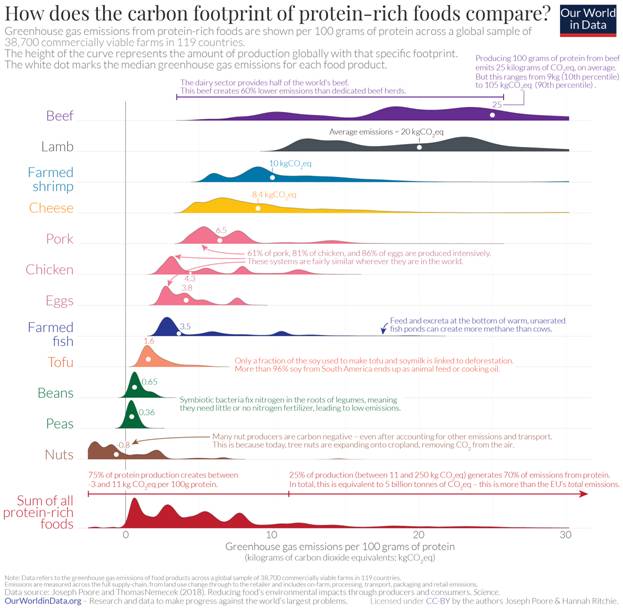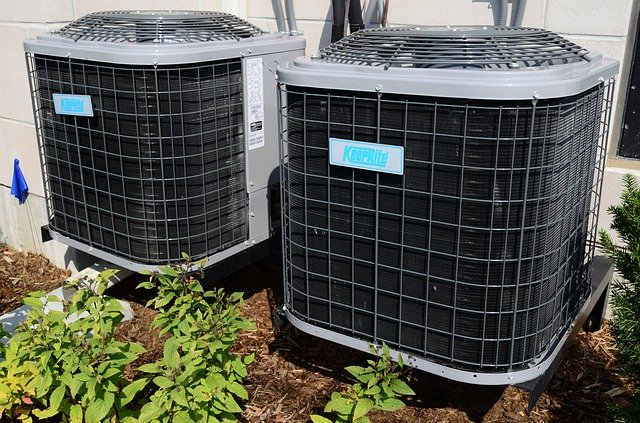It’s seems like we’re seeing hype every week with regard to the two major plant-based meat companies: Impossible Foods and Beyond Meat. That’s because they are solving a huge problem related to global warming and human health.
Global warming was something that I had never previously understood growing up. What is the problem and why is it a big deal to solve? I’ve now learned that it all lies within the Greenhouse Effect. I ended up doing the research, knowing full well that I’ve learned it at some point in high school science class.
Allow me to oversimplify:
• Our sun emits warmth into our atmosphere.
• It then bounces off of Earth’s surface back into our atmosphere to go back out to space.
• Some of the warmth that gets bounced off remains inside of our atmosphere vs. heading back into space. This is a good thing or else we’d be freezing.
• Greenhouse gases (methane, carbon dioxide, ozone, etc.) are the ones responsible for trapping this heat so that we can live.
• However, too many greenhouse gases means that more heat is being trapped inside of our atmosphere than what is considered normal.
The next question becomes, what does this have to do with beef?
Every time a cow burps or passes gas, they release a greenhouse gas called methane. According to National Geographic, this specific greenhouse gas is twenty-eight times more powerful at warming our Earth compared to carbon dioxide.
Since this research, I’ve eliminated beef purchases from my grocery visits. As a result, I’ve naturally been exposed to new forms of protein.
It’s challenging to think about the idea of protein coming from anywhere other than animals. We’re taught growing up that chicken and beef are typically our main sources of protein and that’s why we should continue eating them.

However I learned a few things reading The China Study that were not visible in the familiar food pyramid we all know and (kind of) loved. When looking at your overall health, the author states that plant-based sources of protein are actually considered better for you and your health.
Research from the book claims that, “There are virtually no nutrients in animal-based foods, that are not better provided by plants.” They also deduce shocking results demonstrating that animal proteins promote the growth of cancer cells.
Animal protein foods also emit more carbon in general when compared to alternative sources. Beef is the greatest emitter according to the chart below from Our World In Data.

With this newfound knowledge, I sought after low environmental impact alternatives that still provide the protein our bodies need.
Here are six foods that will give you as much protein as a beef burger (20 grams) while leaving much less of a carbon footprint.
- Edamame Pasta
Favorite Brand: Explore Cuisine Edamame Spaghetti
Protein Amount: 24 Grams of protein in ¼ of a cup
Cooking Recommendations: Make sure to not overcook and drain immediately or else they will stick together. Pairs well with homemade pesto. - Red Lentil Pasta
Protein Amount: 25 Grams of Protein in 1 Cup
Favorite Brand: Tolerant Organic
Cooking Recommendations: Try making this with traditional marinara or a creamy homemade Alfredo sauce. - Tilapia Fillet
Protein Amount: 23 Grams of Protein in 1 Fillet
Favorite Brand: Whole Foods
Cooking Recommendations: Begin by coating the fillets with olive oil, then season the fillet with Italian spices. Apply a thin coat of flour and bread crumbs. Transfer to a hot cast iron skillet coated again with cooking olive oil or coconut oil. Cook each side 3-5 minutes. Squeeze fresh lemon juice onto each cooked side and add capers to the skillet for taste.
- Salmon
Protein Amount: 40 Grams of Protein in 1/2 of a fillet
Favorite Brand: Whole Foods
Cooking Recommendations: Coat the fillet with olive oil or coconut oil. Add Italian seasonings to the top of the fillet and squeeze some fresh lemon juice. Place into the oven for 15-20 minutes at 375 degrees.
- Beyond Burger
Protein Amount: 20 Grams in 1 Burger
Favorite Brand: Beyond Meat
Cooking Recommendations: Heat coconut oil for cooking in a cast iron skillet on high. Once hot, add beyond burger patty and cover with lid for 6 minutes. Flip patty to other side and re-cover with lid for another 6 minutes. Pairs well with Sir Kensington’s Special Sauce.
- Chickpeas
Protein Amount: 39 Grams in 1 cup
Cooking Recommendations: Spice them with paprika and garlic salt. Add to any spinach salad paired with avocado and red onion. Dress with balsamic glaze and olive oil.
The above can serve an easy place to begin with your exploration. As I always say, it’s less about what you’re giving up and more about what you’re going to gain.
Exploring new sources of protein has been nothing short of exciting. The journey of reducing your impact when it comes to diet is all about what you’re going to gain in exploration versus what you’re giving up.
Article Contributed by: Christina Lampert is the founder of the https://sustennialnetwork.com/: an online celebration of the sustainable millennial lifestyle. You can follow her on Instagram @thesustennialfor tips on integrating enviro-friendly foods into your diet.



